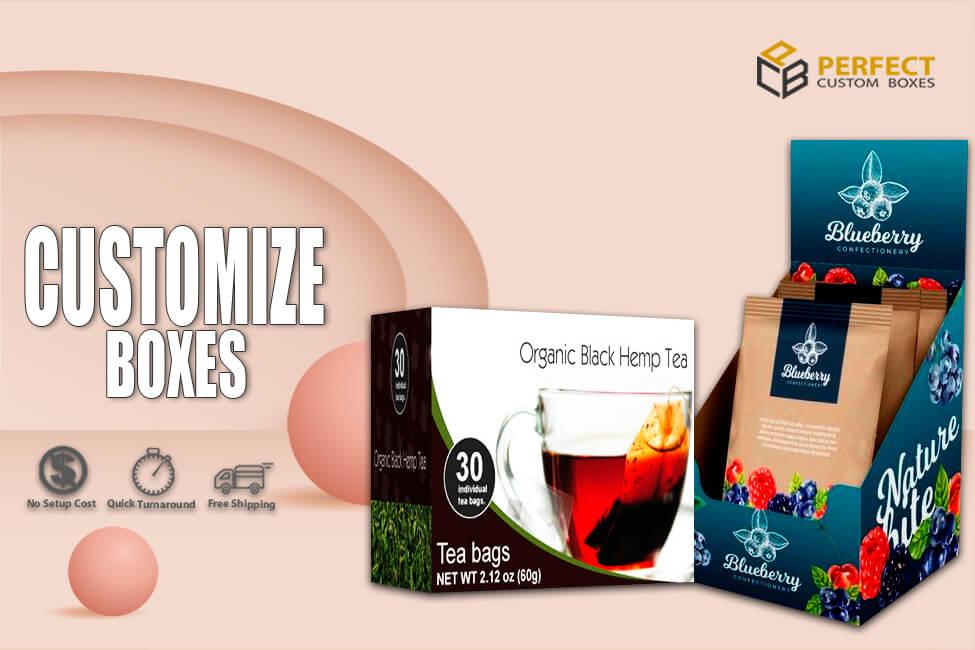Boxes are now a crucial component of contemporary packaging solutions because of their adaptability, usefulness, and visual appeal in various sectors. In addition to helping carry goods, boxes which are frequently composed of cardboard and corrugated material also work well as instruments for branding and product differentiation. Businesses may build and Customize Boxes with options ranging from size and form to design and branding so they can completely match their brand identity and product requirements. Their capacity to accommodate special product requirements is one of their main advantages. They can remain customized to satisfy specific needs, such as a food item that needs specialized compartments for freshness and presentation and a sensitive electronic device that needs exact measurements for a snug fit.
Customize Boxes for Storage and Lasting Safety
This reduces the possibility of damage occurring during storage and travel by ensuring the product is safely contained within the container. Customize Boxes provide lots of chances for visual communication and branding. Companies can use the box as a mobile advertisement by imprinting their brand colors, messaging, and logo. Customized packaging is a potent weapon for making a lasting impression on clients in the cutthroat market when brand exposure and familiarity are critical. Customization enables companies to improve the functionality of their packaging in addition to branding. Adding and changing features like handles, windows, inserts, and closures can enhance convenience and user experience.
Customize Boxes That Claim Ecological Well-Being
Businesses can match customer preferences and ecological aims with their packaging by using boxes. A growing number of consumers are actively looking for products packed. They use Eco-friendly materials due to growing awareness of environmental issues. Recyclable, biodegradable, and compostable materials can make Customize Boxes, demonstrating their dedication to sustainability and appealing to environmentally sensitive customers. A windowpane that lets buyers see the goods without opening the box adds to the overall appeal of the packaging, while a box with a built-in handle makes it easier for customers to carry their products. Customization enables mass personalizing in addition to environmental considerations. Given the abundance of products competing for attention in-store and online, packaging functions as the initial interface between the consumer and the brand.
Customize Boxes for Effective Customer Communication
Businesses may now effectively make them in small to enormous quantities. Thanks to developments in printing technology, they meet the needs of specialized markets and specific client preferences. Customers who value the customized experience and attention to detail are likelier to feel connected to and loyal to a company that offers this degree of personalization. Their adaptability to different markets and product categories is another benefit of Customize Boxes. Businesses in various industries, including food, clothing, electronics, and cosmetics. They can use personalized packaging to differentiate their products and stand out in crowded markets. They provide countless opportunities for creativity and innovation. Whether the target market is luxury goods striving for superior packaging and startups hoping to leave a lasting impression.
Soap Boxes with an Extra Degree of Protection
As the first point of contact between a customer and a product, the boxes frequently impact buying decisions because of their aesthetic value, usefulness, and sustainability. Soap Boxes are essential for protecting products, communicating information, and differentiating companies in a crowded market. They primarily serve to maintain the integrity of the product during the manufacturing and consumption processes. It protects the soap from outside elements like light, moisture, and physical harm, extending its shelf life and preserving quality. Materials with differing degrees of protection and environmental impact, such as cardboard boxes, paper wrappers, plastic wraps, and biodegradable films, are frequently employed.
Manageable Soap Boxes for a Great Market Impact
Boxes are more than just functional; they can be a blank canvas for branding and narrative. Their core and brand identity are communicated through the design, color scheme, typography, and photography. For example, artisanal soaps frequently use handmade, rustic packaging to communicate their genuineness and natural ingredients. However, mass-market soap makers could emphasize colors and simple designs to appeal to modern sensibilities. Every moray element of Soap Boxes, from environmental concerns to design components, adds to the entire customer experience. For customers to make educated decisions, they must have helpful labeling. To cater to consumer tastes and concerns, ingredients, usage guidelines, and certifications such as cruelty-free, vegan, and organic are frequently provided.
Soap Boxes Implementing Customer Safety Features
In addition to fostering trust, concise and clear labeling helps customers with allergies and particular skincare needs choose the correct goods. Designing with sustainability in mind has become increasingly important in recent times. Customers are calling for more environmentally friendly packaging options as Soap Boxes become more conscious of environmental issues. In response, companies are cutting back on extra packaging and implementing recyclable, biodegradable, and compostable materials. Additionally, trash and transportation expenses and carbon emissions are decreased by using simple designs and little packaging. Sophisticated printing methods like digital printing and embossing enable detailed patterns and haptic elements. They improve product stand out on the shelf.
